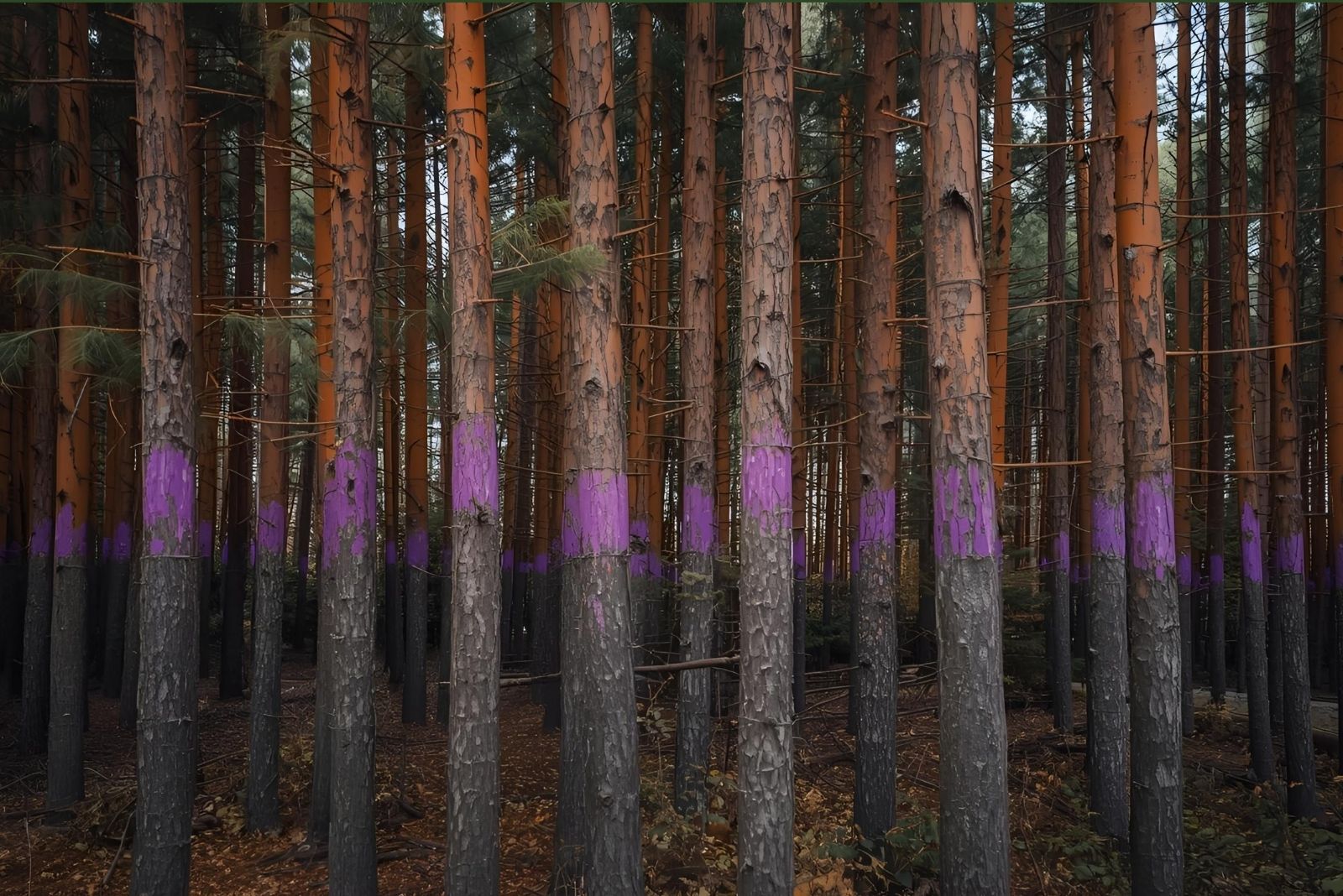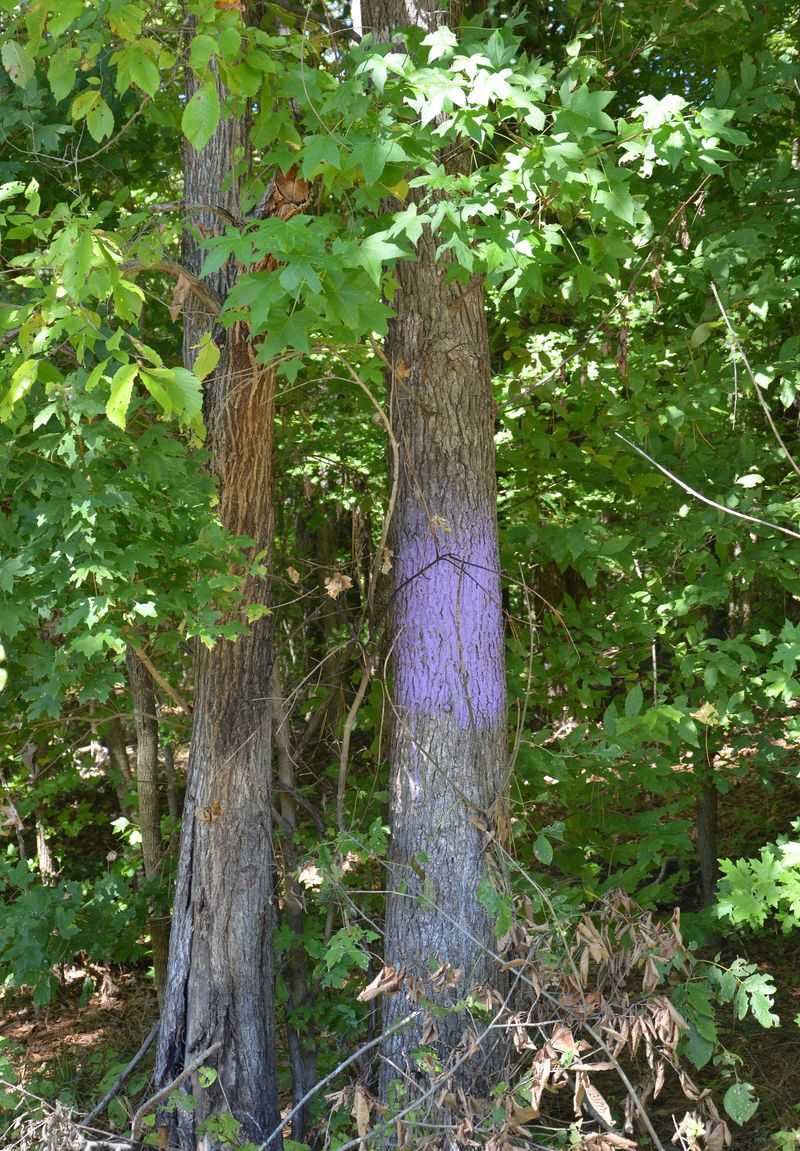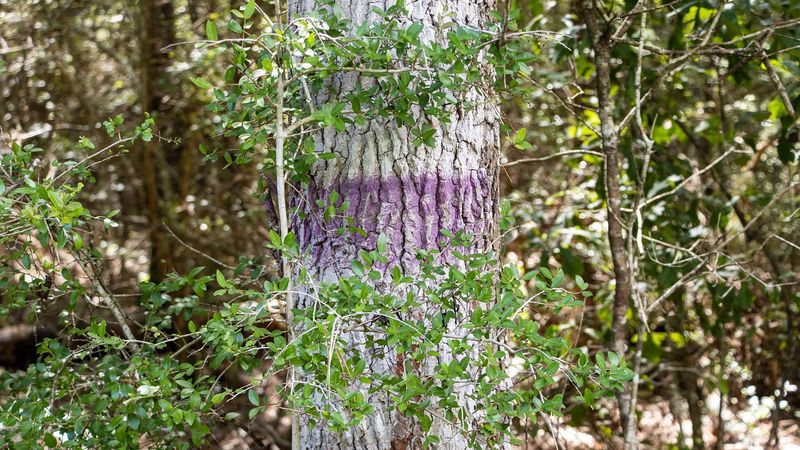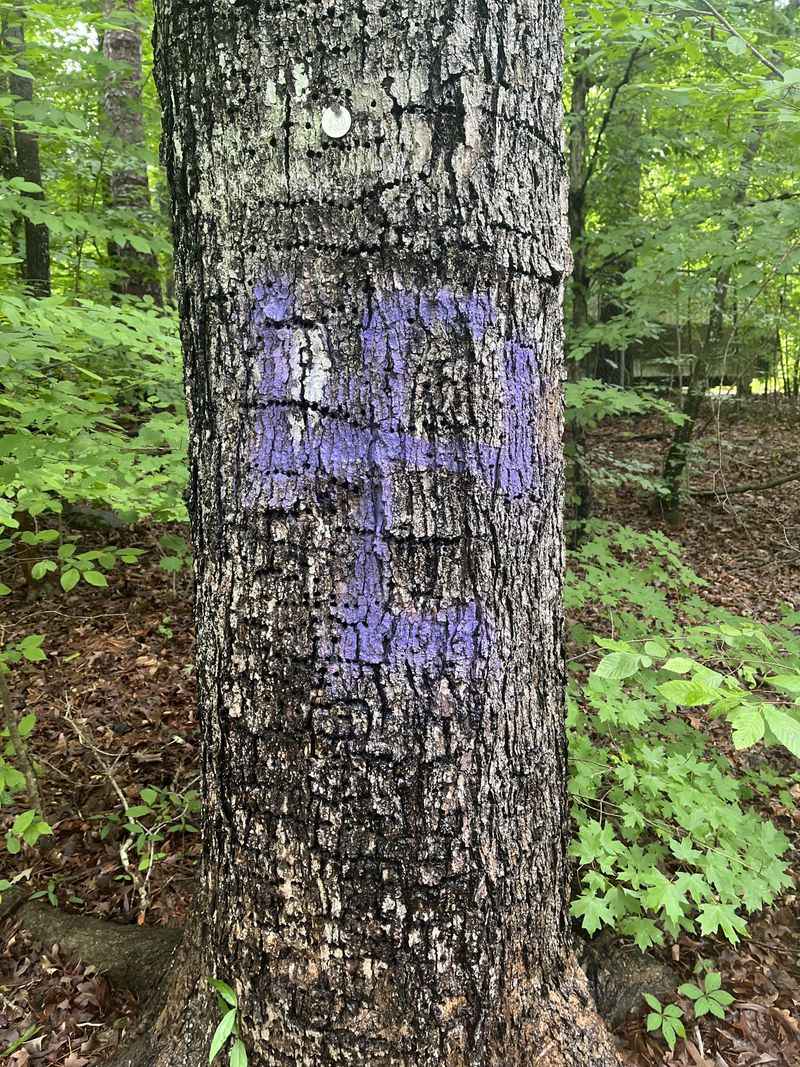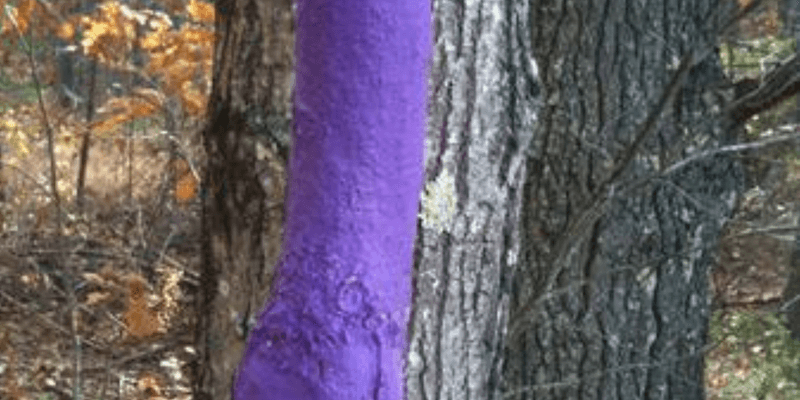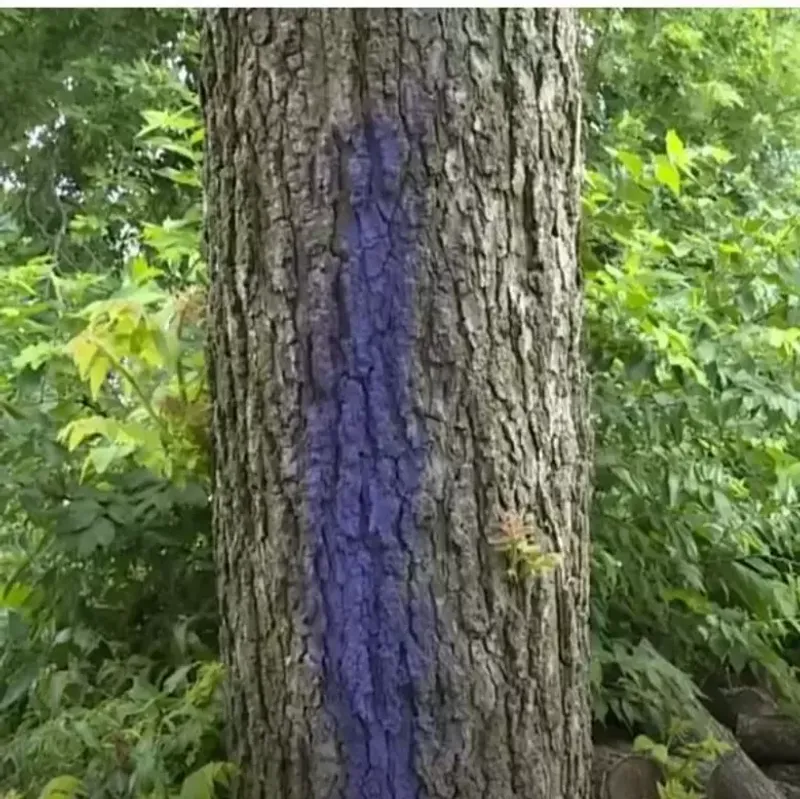If you’ve been hiking through California’s forests lately, you might have noticed something unusual: trees painted with bright purple marks. This isn’t random graffiti or a quirky art project.
Purple paint on trees carries an important legal message that every outdoor enthusiast needs to understand, and it’s becoming more common across the state as landowners seek clearer ways to communicate property boundaries.
1. Purple Paint Laws Replace Traditional No Trespassing Signs
California adopted the “purple paint law” to give property owners an alternative to posting metal signs. Signs get stolen, fade in weather, or fall down over time.
Purple paint marks are permanent, cost-effective, and harder to miss when you’re walking through wooded areas. Landowners across California appreciate this method because it saves money and reduces maintenance while clearly marking their boundaries.
The law specifies exact requirements: vertical lines at least eight inches long, placed between three and five feet from the ground, and positioned no more than 100 feet apart along property lines.
2. Protecting Private Forestland From Liability Issues
Property owners worry about liability when uninvited visitors get hurt on their land. Medical bills and lawsuits can cost thousands of dollars, even when someone trespasses without permission.
Purple markings provide legal documentation that boundaries were clearly communicated. Insurance companies in California often recommend this marking system because it demonstrates responsible property management.
When hikers, hunters, or off-road vehicle riders see purple paint, they know they’re approaching private property and should turn back. This simple system protects both landowners and outdoor enthusiasts from complicated legal situations that nobody wants to face.
3. Wildfire Prevention And Forest Management Access
After devastating wildfires, California landowners became more serious about controlling who enters their property during fire season. Unauthorized campfires, discarded cigarettes, and vehicle sparks have started countless blazes.
Purple boundaries help owners monitor their land and prevent careless behavior that could ignite another disaster. Forest managers need to track who’s using trails and camping spots during high-risk periods.
Some properties allow supervised access for recreation but close during extreme fire danger. The paint marks make it easier to enforce seasonal restrictions, protecting entire communities from potential catastrophe while still respecting outdoor traditions when conditions are safe.
4. Timber Theft And Resource Protection
Valuable timber disappears from private California forests more often than most people realize. Thieves cut down expensive hardwoods and sell them for profit, sometimes stealing thousands of dollars worth of trees overnight.
Purple markings establish ownership and warn potential thieves that the property is actively monitored. Law enforcement can more easily prosecute timber theft when boundaries are clearly documented with this standardized marking system.
Beyond timber, landowners also protect mushrooms, ferns, and other forest products that have commercial value. The paint creates a psychological barrier, reminding people that taking resources without permission constitutes theft, not harmless foraging.
5. Protecting Sensitive Wildlife Habitats And Ecosystems
Some California landowners dedicate their property to wildlife conservation, creating sanctuaries for threatened species. Unrestricted human access disturbs nesting birds, breeding animals, and fragile plant communities that need protection.
Purple boundaries keep well-meaning hikers from accidentally damaging restoration projects or sensitive habitats. Even careful visitors can trample rare wildflowers or disturb animals during critical breeding seasons.
Conservation easements and habitat protection programs often require landowners to limit public access. The paint provides a gentle but firm reminder that some places need to remain wild and undisturbed for nature to thrive and recover from past disturbances.
6. Rising Property Values And Recreational Pressure
As California’s population grows, more people seek outdoor recreation in limited wild spaces. Private landowners near popular trails face constant foot traffic, littering, and property damage from people who don’t realize they’ve left public land.
Purple paint helps manage this recreational pressure without seeming unfriendly or hostile. Many owners don’t mind occasional hikers but need to prevent their property from becoming an unofficial campground or party spot.
Property values in scenic areas have skyrocketed, making landowners more protective of their investments. Clear boundaries help maintain property conditions and prevent the overuse that degrades both land quality and enjoyment for everyone.

